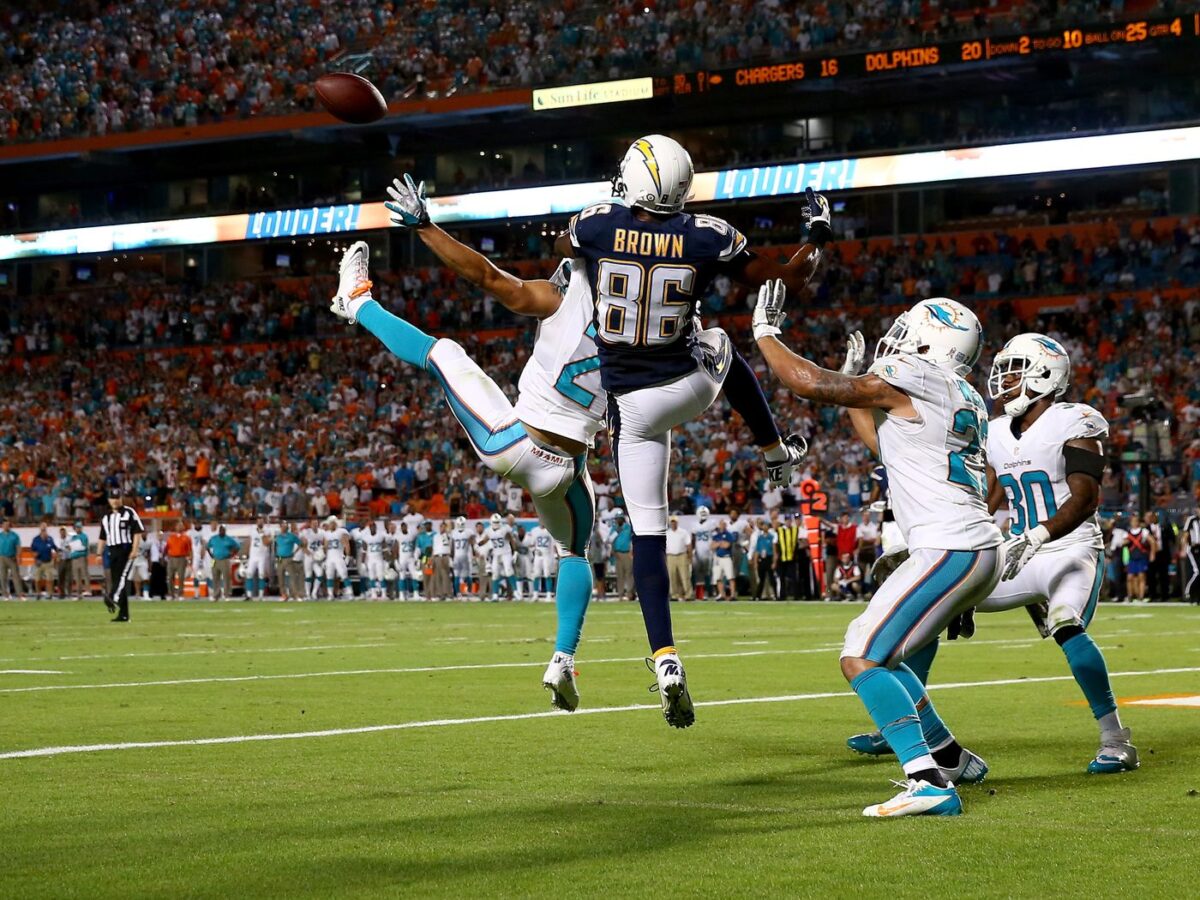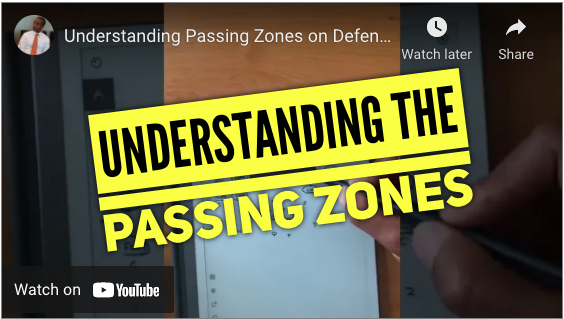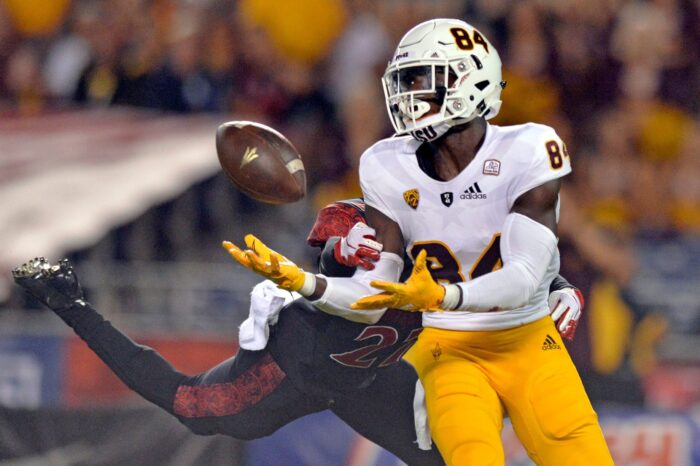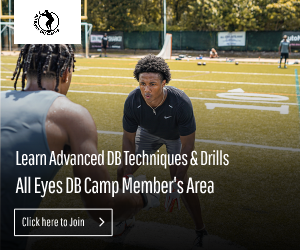Understanding the fundamentals of pass coverage is essential for defensive backs at all levels of the game. In this article, we will explore the key concepts and techniques involved in pass coverage, including zone coverage, man-to-man coverage, matchup zones zone blitzes along with the roles and responsibilities of different defensive positions.
Zone Coverage
Zone coverage is a pass defense strategy where defenders are responsible for specific areas or “zones” on the field rather than covering individual receivers. The objective is to deny passing lanes, close passing windows and make it difficult for the quarterback to find an open receiver. There are various zone coverage schemes. The most basic of those coverages are Cover 2, Cover 3, and Cover 4.
Cover 2 involves two safeties splitting the field into deep halves. The cornerbacks cover the short outside areas, while the linebackers focus on covering the middle zones. This scheme is effective against short and intermediate passes but can leave the defense vulnerable in deep areas.
Cover 3 involves three deep defenders, each responsible for a deep zone. The remaining defenders cover the underneath zones (flat, curl, hook and low hole). This scheme provides good coverage against deep passes but can leave vulnerabilities in the intermediate areas.
Cover 4, also known as “quarters coverage,” splits the field into four deep zones. Each defender is responsible for a quarter of the field. This scheme offers strong coverage against deep passes, but it can leave the underneath areas more vulnerable.
Man-to-Man Coverage
Man-to-man coverage involves defenders being assigned specific offensive players to cover. Each defender follows their assigned receiver across the field, aiming to stay in close proximity and disrupt the pass play. Man-to-man coverage requires excellent individual technique and athleticism. To execute in man coverage, defenses use different techniques, press coverage and off coverage.
Press coverage is a technique where the defender lines up directly across from the receiver (typically 1 to 2 yards) and aims to disrupt their route by jamming them at the line of scrimmage using a hard press technique or mirror them closely using a soft press technique. This technique is often used to disrupt timing-based pass plays.
Off coverage involves the defender giving the receiver some cushion before the snap, allowing them to react to the receiver’s route. Being able to back pedal, get out of breaks and react well to the receiver’s moves is a strong requirement to excel at this technique. It provides more protection against deep passes but can leave the defender vulnerable to quick underneath routes.
The most common of the man to man coverages that are found are Cover 0, 1 and 2 man. Cover 0 involves every eligible wide receiver on the offense being assigned to a defender on defense. Instead of there being an extra player(s) to help with coverage in Cover 0, those would be extra players are used to rush the passer and hurry the quarterback’s decision. Cover 1 involves the same assignment of all eligible receivers to defenders for coverage. However, Cover 1 provides an extra defender in the form of a safety in the middle of the field to help the defenders on deep throws. In 2 man, a pair of safeties split the two deep areas of the field while other defenders are assigned to the eligible receivers. Those defenders make every effort to cover the short and intermediate routes while relying on the safety for the deep throws.
Match-up Zones
Match up zones have become popular in recent years. This blends a bit of both worlds. It assigns defenders to a certain area of the field and then requires them to attach themselves man to man to receivers that enter those areas based on the rules of the coverage. It has been used to confuse the quarterbacks reads and lead him into making errant throws.
Roles and Responsibilities
Different positions on the defense have specific roles and responsibilities in pass coverage. While the defensive line’s primary job is to rush, the linebackers, cornerbacks and safeties handle the pass coverage responsibilities. Here is what each of them do.
Cornerbacks are primarily responsible for covering wide receivers. They must have excellent speed, agility, and coverage skills. Cornerbacks often play man-to-man coverage but may also be involved in zone coverage schemes. The more intelligent you are at cornerback, the more plays you will make.
Safeties are the last line of defense and have a crucial role in both zone and man-to-man coverage. They provide deep coverage and help defend against long passes. Safeties must possess good awareness, anticipation, and tackling abilities. Those first two characteristics are developed greatly by studying the defensive playbook and film.
Linebackers play a significant role in pass coverage, especially in zone schemes. They cover the middle zones and must be adept at reading the quarterback’s eyes and reacting to potential passing routes. Linebackers also play a vital role in defending against short passes and covering running backs or tight ends. As offenses have expanded their passing abilities, linebackers have become more versatile or they have been replaced by extra defensive backs.
On occasion, defensive linemen will drop into coverage in schemes known as zone blitzes. These schemes will involve linebackers and defensive backs switching roles with the defensive line. Linebackers and or defensive backs will rush the passer from various locations while defensive linemen drop into coverage to fill the void. Like match-up zones, zone blitzes are used to confuse the quarterback’s reads but it also serves to mess up the blocking rules of the offense leading to a more intense rush on the quarterback.
Whether using zone, man-to-man coverage or any of it’s variations, the objective remains the same: to limit the effectiveness of the opposing team’s passing game. By understanding the basics of pass coverage and the responsibilities of different defensive positions, players can effectively disrupt passing routes, close passing windows, and ultimately increase the chances of forcing incompletions or turnovers. Mastering pass coverage requires a combination of understanding and executing all of these aspects.
Chad Wilson is the owner of All Eyes DB Camp and author of "101 DB Tips". He played college football at the University of Miami and briefly in the NFL for the Seattle Seahawks. Over his 15 year high school football coaching career, he tutored over a dozen Division I defensive backs and as a trainer has worked with NFL All Pros, first round draft picks, college football All Americans and Top 10 ranked high school football prospects.









